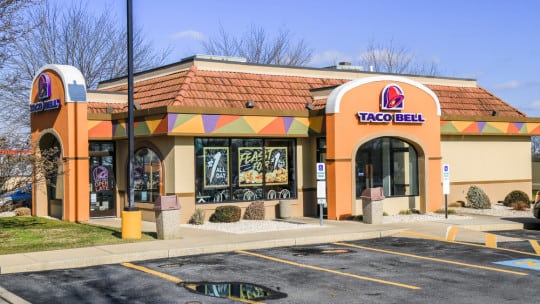
It seems every brand is trying to break through on social media. Even words want recognition. The word cofveve broke through recently, as well as a misspelling of it: Covfefe. But what if you’re a brand or organization attempting to get noticed and then thrive on social?
Few brands are doing social better than Taco Bell. So we asked Matt Prince, Taco Bell’s PR + brand engagement manager, for the secret recipe and a few condiments.
Know Before You Go: For Prince, two things are important to understand “before you compose a single post.”
Number One:Know who your audience is and who your fan base is. Know to whom you are communicating. And “just because a social platform exists doesn’t mean you should be on it,” Prince says. “If you have a good understanding of your audience and it is [on a platform], that’s where you should be.”
Number Two: “Be very clear on what success [with social] looks like to your team, your executives and your brand. So if what you’re doing or thinking of doing on social doesn’t ladder up to those ROIs, you don’t do it. It’s one of those hard conversations you have to have with the people around you and above you,” he says.

Manager, PR and Brand Engagement
Taco Bell
“You have to say, ‘We need a really clear strategy on what the goal is for this business and what the role social plays to support that goal.’”
What do you do if your social media effort doesn’t fit with the business’ goals? “Maybe [social] needs to be changed so it matches...or it’s just not done at all,” Prince says.
Being “really hard on those criteria and brand tenets to insure you’re doing everything you can to ladder up to the business” will ensure success for communicators by allowing them to “showcase results in a much clearer way,” he says. “You can report back to” senior executives “and say ‘You asked us to accomplish X, Y and Z. And these are the things we did to accomplish X, Y and Z.’ As opposed to just saying, ‘Well, we got this many retweets.’ That’s not going to drive the business.” [Specifics on how Prince provides metrics to the C-Suite in the next edition of PR News.]


The Bell System: UGC examples: The Twitter post (top) shows a HS senior taking his graduation photo at a Taco Bell. A look at taco-inspired art on Instagram (above). The brand shared both, increasing the stage for the users who created the content.
How To Thrive on Social
So, how did Taco Bell begin to thrive on social? “We gained ground on social when we took away promotional posts, for the most part,” he says. The focus, Prince emphasizes, is to “talk with our audience as a friend would talk to a friend. We’ve removed company jargon and focused on what our fans were saying and how they were saying it.”
What Social Does for Taco Bell
Looking at Taco Bell’s social accounts you realize each has a different strategy. Its “Instagram [account] is a haven for artistic, visual material for people who either love the brand or love tacos can support,” he says [see graphic above, right]. “Will [those posts] ladder up to the things we’re selling in the restaurant? Yes, for sure,” Prince says. “Is it always going to be driving people to the restaurant? Definitely not,” he admits. “Hopefully it will increase brand awareness and keep Taco Bell top of mind. That’s the main goal for social.”
“If you go to Twitter,” he says, “we’re basically repurposing content that’s already out there. A lot of what we do is retweet user-generated content or posts, videos, images and other material that fans are already doing. We’re just giving [fans] a larger stage to share it on.”
He provides an example of high school seniors taking graduation pictures at a Taco Bell restaurant [see graphic above, left]. “Will [the brand retweeting that photo] get people to go to Taco Bell? Not necessarily. But it casts the brand in a really great light in that Taco Bell is at a place in the culture where a high school senior wants to take his graduation pictures at a Taco Bell. And we see that all the time.”
More important, the user generated content provides an authenticity for the brand. “[Retweeting] that [photo] will raise brand awareness and give the brand a place to live and thrive in a way promotional posts just can’t do,” he says.
NOTE: Prince will be speaking at PR News’ Big 4 Social Media Conference, Aug. 9-10, San Francisco. For info: http://bit.ly/2pZcFct
NOTE: This article appeared originally in PR News, June 12, 2017. For information about subscribing, please visit: https://www.prnewsonline.com/about/info
CONTACT: @matt_prince
